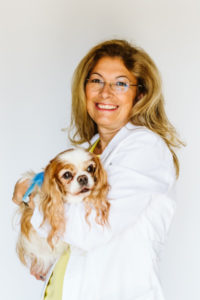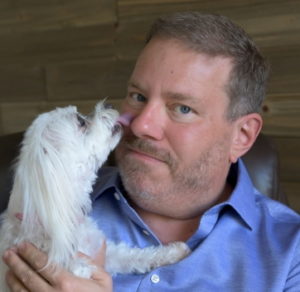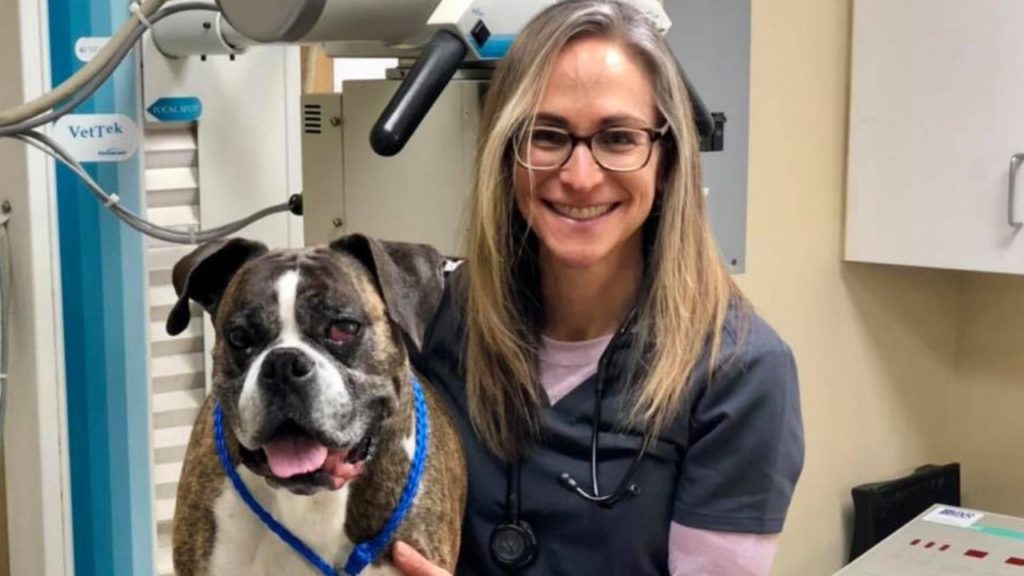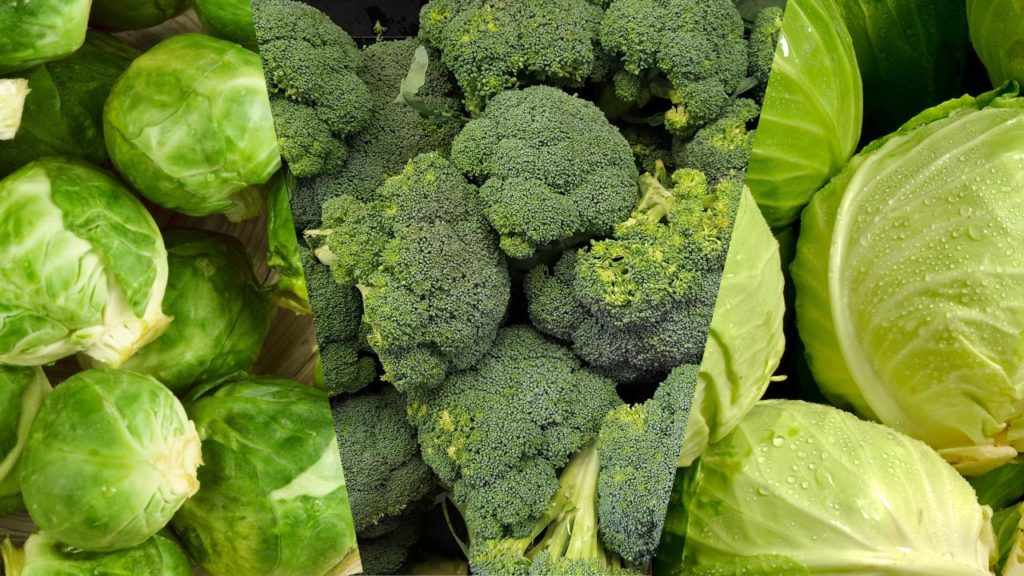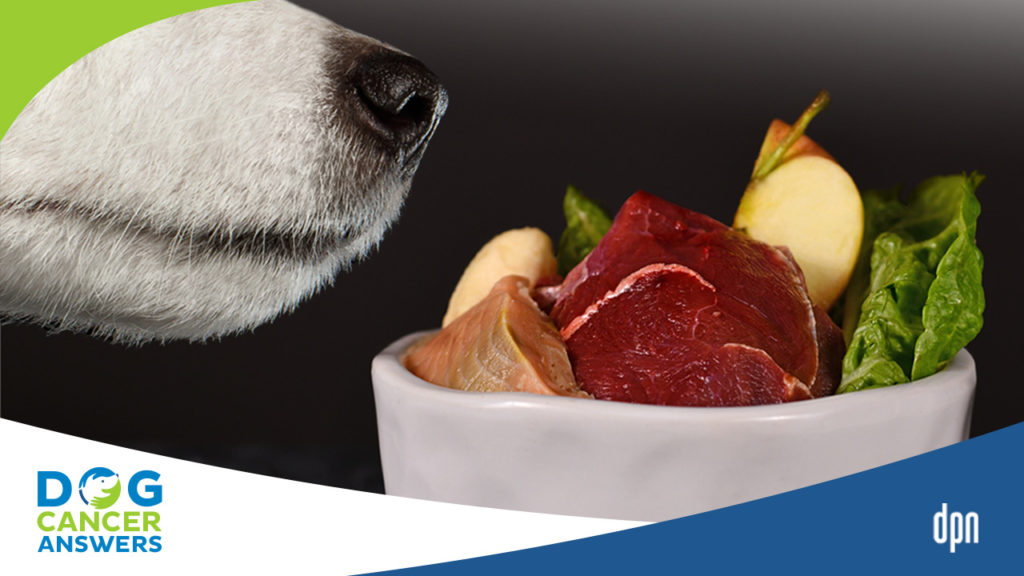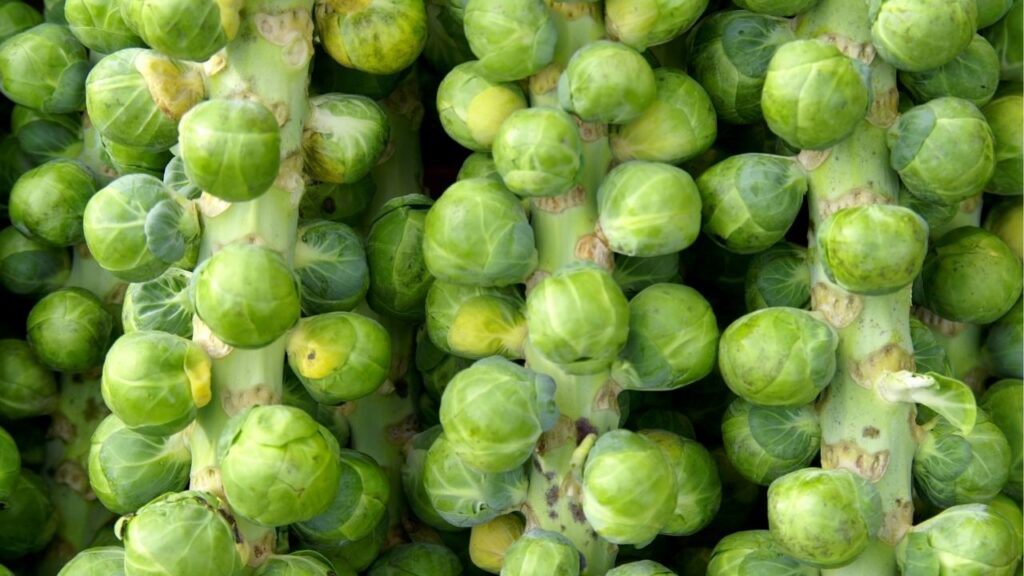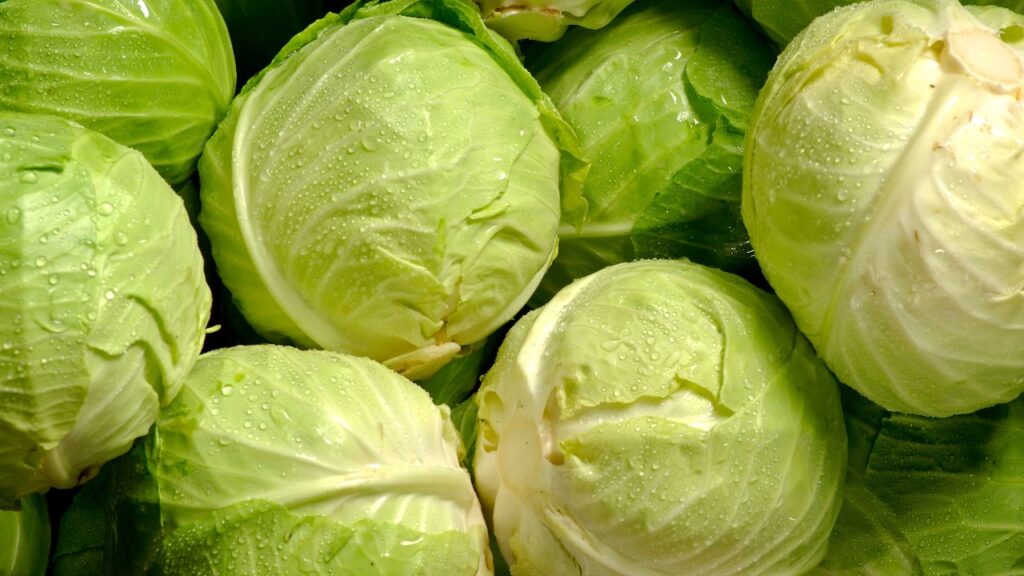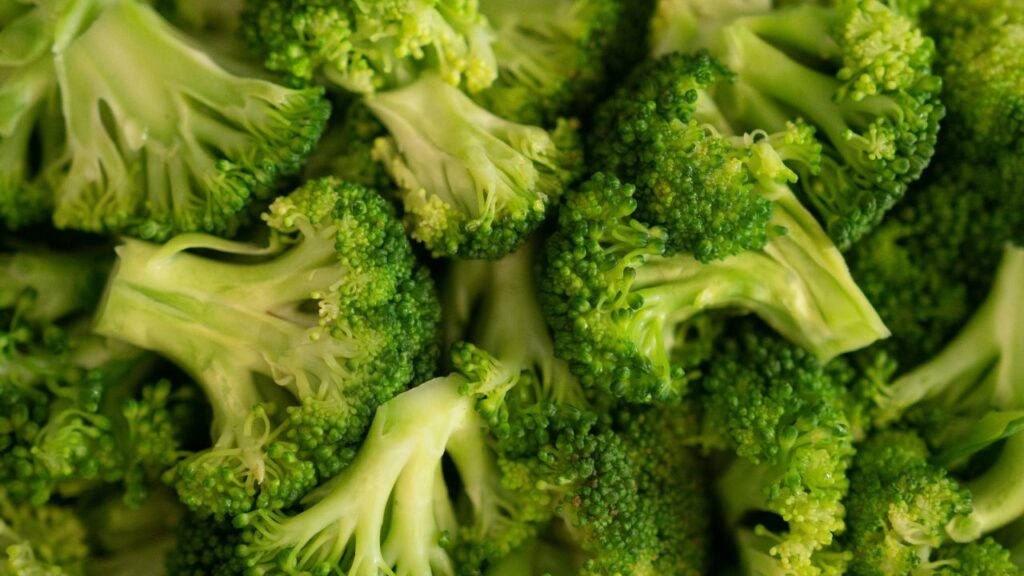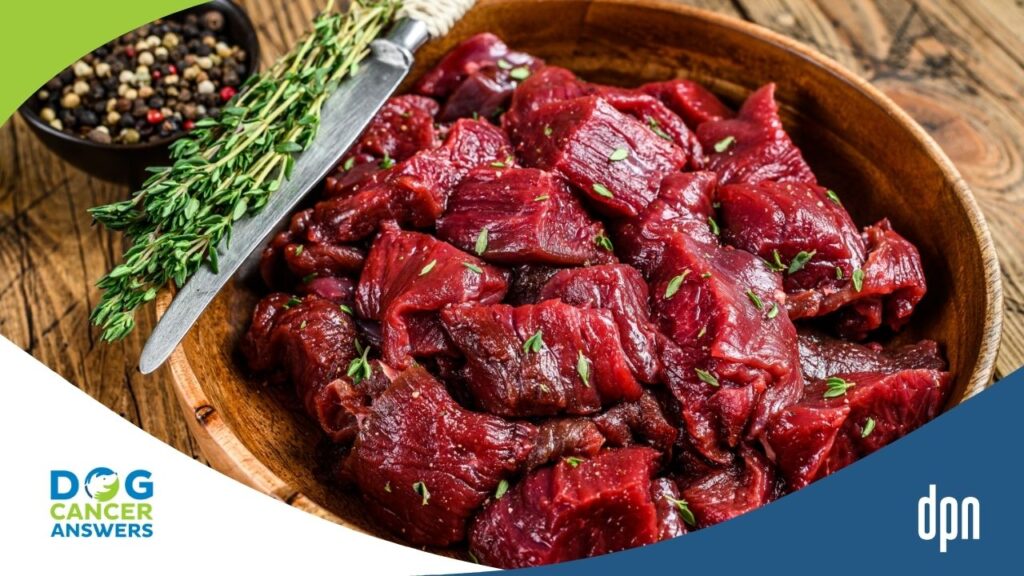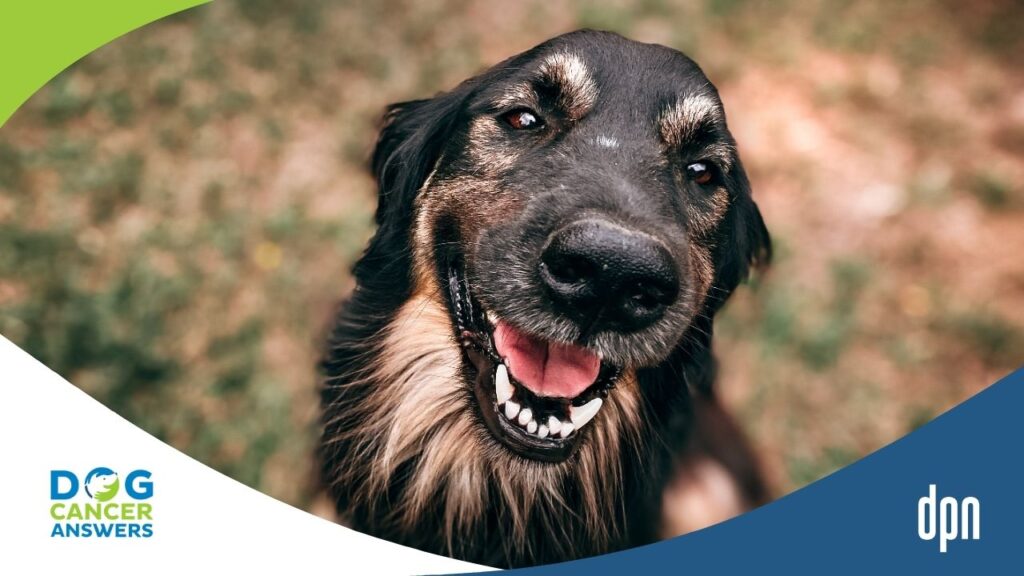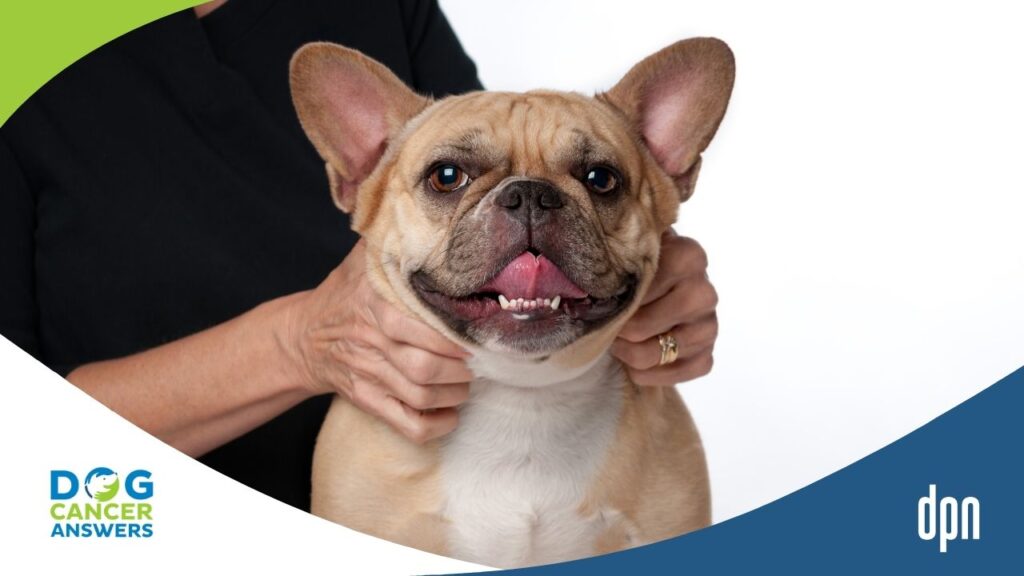EPISODE 97 | RELEASED November 23, 2020
Foods That Help Fight and Prevent Cancer in Dogs │ Dr. Judy Morgan Deep Dive
Dr. Judy Morgan joins us to talk about making balanced and nutritious homecooked meals that are easily digestible, taste delicious and are enticing.
SHOW NOTES
Holistic veterinarian Dr. Judy Morgan talks about making balanced and nutritious homecooked meals that are easily digestible, taste delicious, and are enticing to your dog. Best of all, she explains how anyone can make them with little to no cooking experience. She talks about cancer-fighting foods, quality proteins, cooking and preparation methods… And she even shares a little bit about her journey of having a dog that had cancer, named Myra. Myra taught Dr. Morgan how to enjoy each moment and that she should always take the opportunity to stop and smell the roses every chance she gets.
In this episode, Dr. Morgan covers a variety of topics on different diet types, special needs and considerations, her favorite protein sources and veggie options, as well as how to – what she calls “color the rainbow” – when making your dog’s food to ensure that you include their daily vitamin requirements.
Monkey’s House A Dog Hospice & Sanctuary: https://www.monkeyshouse.org/cms/
Natural flea and tick Prevention from Dr. Judy’s blog: https://drjudymorgan.com/blogs/blog/flea-and-tick-prevention-revisited
More on natural flea and tick prevention: https://drjudymorgan.com/blogs/blog/natural-flea-tick-prevention
>> Dr. Judy Morgan: From a Chinese medicine perspective, which I do a lot of my food energetics through that the high temperature cooking is going to generate more internal heat in the body. So when we eat things that are cooked on the grill, when we eat things that are broiled, when we eat things that are baked at high temperatures, it increases the internal heat energetics in our body and cancer tends to be a hot problem. It’s an inflammatory problem. So last thing we want to do is add more heat to the body.
>> Announcer: Welcome to Dog Cancer Answers, where we help you help your dog with cancer. Here’s your host, James Jacobson.
>> James Jacobson: Hello friend. Today, we are talking about cooking delicious food for your dog. We have a guest veterinarian who is seasoned all the way around with 35 years of practice. She’s authored several books on cooking nutritious home cooked meals for dogs. And she wrote a book that sort of documents her transition from working many years as a traditional vet, relying mainly on Western medicine techniques and big pharma and vaccines to help treat her patients. To expanding those horizons by gravitating towards becoming a primarily holistic and integrative veterinarian.
The guest I’m speaking of is, Dr. Judy Morgan. Dr. Morgan is a passionate and ambitious holistic veterinarian with a serious desire to help heal her patients from the inside out. In fact, she has set for us a rather ambitious goal to touch the lives of 10 million pets worldwide by helping them live healthier and longer lives.
Dr. Morgan has been featured on CNN, Fox News, PBS over, 100 radio stations. She has been the recipient of several prestigious industry awards and is internationally recognized. But don’t tell her, I told you all that because she much rather be known for her work in rescuing senior dogs and caring for animals that are in hospice care.
Dr. Morgan is truly one of a kind and we are so happy that she joined us today to talk about making proper and balanced meals for dogs with cancer, feeding with cancer prevention in mind, and to share her own story of caring for the intestinal cancer needs of her beloved and late rescue dog, Myra.
She also shares with us the priceless lessons that Myra taught her while she was here. Lessons of hope and love and enjoying every day with our dogs and with each other.
Now let’s get into the meat and veggies of my interview with Dr. Judy Morgan.
Dr. Judy Morgan. Thanks for being with us.
>> Dr. Judy Morgan: Thanks for the invitation. I’m so happy to be here.
>> James Jacobson: You are–we’ll call it an expert on feeding animals. You have dedicated a bunch of your career to studying what to put inside of your dogs and cats, right?
That’s fair?
>> Dr. Judy Morgan: Absolutely
>> James Jacobson: Written several books, lectured on it, you have a line of nutritional supplements.
You geek out on this.
>> Dr. Judy Morgan: Yes, I geek out on this.
>> James Jacobson: And how many years have you been in practice?
>> Dr. Judy Morgan: 36 and a half years.
>> James Jacobson: Okay.
>> Dr. Judy Morgan: It’s a very long time.
>> James Jacobson: So, you got your stripes and you’re moving from New Jersey down in North Carolina to… take it down a bit?
>> Dr. Judy Morgan: Taking it down, just a notch. I am leaving in-person practice in the clinics and spending more time with my online education, my supplement lines, my book writing, articles, blogs… that sort of thing. I set a goal quite a few years ago to change the lives of a million pets worldwide. And within a year we had reached that goal. And I know that we reached that goal because I had a few blog posts that went over a million readers. So, I said, well, then there’s gotta be a million pets associated with those people.
So, I reset the goal to 10 million and working with them one-on-one in the clinic – you can do twenty a day, maybe. When you are speaking, either through social media, through webinars, through in-person groups, you reach a lot more pets and pet parents. So, that was my goal and I just need to reach that goal before I’m done doing this job.
>> James Jacobson: Okay. We’ll help you do that with this podcast, for sure. Because, there’s so much to cover I thought the way we would organize this conversation is to look at the various stages. And obviously with most of our listeners, almost everyone has dealing with a dog with cancer. So I’m going to get a little personal with you because you documented your journey with Myra on your blog a few years ago, right?
>> Dr. Judy Morgan: Yeah.
>> James Jacobson: So, I want to get into that, how you treated your dog, Myra, with her cancer and her diet, what you fed her.
>> Dr. Judy Morgan: Okay.
>> James Jacobson: And then I also want to address one of the questions that people ask all the time, which is: cancer sucks – what can I do to prevent this in the first place? So we’ll talk about that.
>> Dr. Judy Morgan: Okay.
>> James Jacobson: And then at the end, I got some other diet questions, but let’s talk about Myra, cause it’s always tough when you have to treat your own dog. Tell us about Myra.
>> Dr. Judy Morgan: Oh my gosh. We have rescued so many dogs over the years and we mostly focus around Cavalier King Charles Spaniels in our household, but we also have English toy Spaniels.
And just about the same time that I said I wanted to reach 10 million pets, my New Years resolution was to branch out past Cavaliers and… as luck would have it on New Year’s day, I got a request to take in a dog who was a Cavachon, a Cavalier Bichon. And I said, well, that’s branching out–it’s only half Cavalier.
So, that’s how Myra came to live with us. And she was supposed to be a foster dog.
And her owner had bought her when the owner was single and she bought her at a pet store, and they were very bonded. And then that owner got married and then she had a baby and the husband hated Myra. And one of the reasons that the husband hated Myra was because she peed on the carpet, and Myra also was afraid of the young Husky that the husband decided he wanted.
You know, so here’s a big dog and a small dog, and Myra literally hid under the bed the entire time. And so the owner decided it would be better off for Myra to go somewhere else. And I’m so thankful she did because it was not a happy life for her.
So, I see Myra for the first time, and she is just covered in horrible skin. Her skin was bald, red, cracked alligator, itchy red skin, infected ears… She was a train wreck.
And I didn’t know about the peeing on the carpet thing until, as she was walking out the door, she said, Oh, by the way, she pees on the carpet for spite.
And I just looked at her. I said, no dog pees on the carpet for spite. So there’s something going on.
So the poor dog, she had horrible allergies. Her food didn’t agree with her. She had bladder stones. Of course she was peeing on the carpet. She was miserable.
So first things first we took care of her bladder stones. I made a hypoallergenic home cooked diet for her–within six months that dog’s ear infections were cleared up, her skin was cleared up. She had a beautiful, full coat. Her personality came out and she was wonderful.
When we’d had her for about… twenty-months. I was feeding fresh pineapple to the dogs as treats and Myra loved it. When I’m in the kitchen, making anything, I’m always like, well hey, do you guys like this? And I just tried things.
Pineapple is really good for dogs, by the way–you’re in Hawaii. So fresh pineapple is awesome.
So, I was handing it out and Myra just attacked it and she snarfed up a lot of it. And then a few days later, Myra started vomiting and I said, Oh geez, you know, maybe she swallowed some of that whole and maybe it didn’t digest… and maybe that’s the problem? And I did surgery because she had an obstruction.
And I did find two pieces of pineapple that were stuck in her duodenum, which is the upper part of the small bowel. And there was this really angry looking area in the intestine. And I said, Oh my gosh, the acid from that pineapple being stuck really eroded her intestine. But I didn’t remove the area because I thought, well, it’ll heal once we get the obstruction out of there.
And so we did all was well. And about a week and a half later, we called “vommaggeddon”. That dog vomited more than you would think a 300-pound dog could vomit. I came home and the house was coated. And I said, Oh, we have a problem. And so then I was worried, maybe she developed a stricture after the surgery.
A stricture is where the bowel scars down and scars closed. So, I thought, well, maybe I screwed up that surgery–never happened in the past, but maybe I did something wrong–you know, after 35 years of practice.
So, I called up one of my friends at a specialty center and I said, I know it is Labor day weekend, will you come in and do surgery on my dog?
And he did. And he said, “yes, there’s an obstruction there, but I don’t think it’s from the surgery that you did. I don’t know what it is, but we took out a section, we put it back together. It looked a little funny. Do you want me to send it for biopsy?”
And I said, “well, do you think it’s anything bad?” And he said, “No. I really don’t think so, but we’ve got it. I think we should send it”.
And I said, “sure, go ahead and send it”. He called me a week later and said, “I can not believe this, but this dog has an aggressive Lymphosarcoma of the bowel”.
So the pineapple was not the problem.
So my original blog that I wrote was, Oh my gosh, be careful what you feed your dogs. And then the next blog was, well, Holy cow–thank goodness the pineapple got stuck. Cause we found the problem.
>> James Jacobson: And thank goodness you did the surgery twice and sent it off to the lab. Cause this is not something you can palpate for. I mean, you are really, really lucky.
>> Dr. Judy Morgan: You know, when your veterinarian says, should we send this out? And you say, well, do you think it’s something bad? And they go, no. Say good. Send it anyway.
>> James Jacobson: These are two DVM is talking to each other.
>> Dr. Judy Morgan: Yes. Lesson learned. Always send it.
As a matter of fact, one of my veterinary friends, her Mastiff went in for a bloat and the veterinarian surgeon said, “would you like me while I’m here? Just for yucks because this is an older Mastiff, would you like me to get a biopsy of the spleen and the liver?” And she said, “do they look abnormal?” And he said, “Nope, while we’re here”. And she said, “yes”. The dog had a B-cell lymphoma in his liver. Luck of the draw that they just decided to take that biopsy while they were there.
So, that started our whole journey with Myra and I managed to find an oncologist who was an Integrated Veterinarian Oncologists, which meant that she practiced acupuncture, she practiced Chinese herbs. She was not into food therapy yet. She was by the time I was done with her. But it was a great mix because we could speak the same language and… when we had the conversation and I said, “will chemo help this dog?”
I’ve never had an animal have chemo. Well, one person in my family had chemo and it worked, but I’m not a huge fan. I’m not a huge fan of all the chemicals and the drugs. I tend to, what can I do naturally for this? And she said, “if we don’t use the chemo, we’re going to lose this dog. And if we do use the chemo, we may lose the dog”.
So we opted to combine the two things. So, we combined acupuncture, diet, herbs, and chemo. And four weeks in, her ultrasound was clean. We were supposedly cancer-free. We went home, had a bottle of champagne. We were so happy. And I will tell your listeners one of the best things we did the day Myra was diagnosed is we made a bucket list.
And it was good for the entire family because every morning we would get up and say, what does Myra want to do today? And I’m a workaholic. My husband’s a workaholic. We have way too many businesses that we work in. And, you know, we were living with my parents and helping take care of my dad at the time.
And it didn’t matter every morning we said, what does Myra want to do today? And we would pick a different park. We would go to the waterfront. We would go to the beach. We would go to outdoor restaurants–and order her plain Turkey burgers. She ate at more restaurants and she could pick one other dog–cause we had ten at the time. She could pick one other dog to take with her on her outings.
But it was good for my husband and I, too, because it made us stop and smell the roses every day.
We spent time and, Myra also loves squeaky dinosaurs. That was her favorite thing in the entire world. We got hundreds of squeaky dinosaurs in the mail.
Every day, there were new packages, and I would bring them home from work and Myra would open the bags or the boxes, get the dinosaur out to out the squeakers, and that was part of her daily therapy.
You really have to find joy in every single day. I don’t care if it’s your dog, your cat, your husband, your child, whoever is sick. Find joy in every single day. And that’s what we did.
>> James Jacobson: Embracing quality of life is so important.
>> Dr. Judy Morgan: Absoultely.
>> James Jacobson: A pivotally important question. Was she able to distinguish between the dinosaur squeaky toys and other squeaky toys?
>> Dr. Judy Morgan: Believe it or not, yes. This dog, she would go for dinosaurs.
We took her shopping–we were up in Vermont. We went to the Orvis store and I’m like, Oh, geez, I don’t know if they have dinosaurs or not? And she actually did pick out something else–but it was really funny I have pictures of her shopping and standing at the counter purchasing things.
And she played with those toys, but not near like the dinosaurs. It was really rare.
But anyway, so we had our celebration at week four–week five, we went back and we had three new tumors. That’s how fast things change. And, Oh my gosh, how can this be happening? And then she developed one in her airways. So not only was it in her intestines, then it decided to go other places. And, in the last 24 hours of Myra’s life, her immune system was wiped out, totally wiped out.
Bichons like to make what I used to call poodle warts. But Bichons, Cockers, any dog as their immune system is getting suppressed–they’ll develop these warts. And I literally sat there with her in my lap and in a period of 24 hours, she developed about a thousand. They were literally popping up in front of my eyes. And then her respiration was in trouble–she had had multiple surgeries at that point. And, you know, at that point we knew that we had been defeated.
But it taught me a lot about what to do, what not to do. And I say that every rescue dog that comes into our house is there for a reason to teach me something. And Myra came to me and because of all of her health issues that she had leading up to that point, it was not a surprise to me that she developed cancer. It was not a surprise to me that it developed in her intestinal system, because that’s where the immune system lies in her immune system was shot from the get-go.
But she came to teach me things. And so she taught me a lot….
>> James Jacobson: What did she teach you?
>> Dr. Judy Morgan: Well, some of those lessons are the enjoy. Every day. I get people that come into my office and they’ll bring me their list. And they’re literally going to six specialists a day. And this poor dog is being drugged from office to office, to office, to office. And by the time they get to me and they’ve already been to four that day and they bring me a stack of paper like this and they haven’t gotten anywhere.
I look at them and say, I want you to leave my office right now. There is a huge park. A quarter mile down the street, you and your dog are going to go to that park for the next half hour. You are going to walk. You are going to talk. You are going to sit and look at the river. You’re going to spend time.
You are searching for someone, anyone to give you a different answer. You haven’t gotten it through the first 40 specialists. You’re not going to get it. Please enjoy today. Don’t keep torturing yourself and your animal.
If it’s a diagnosis that there really is nothing that can be done. It doesn’t mean you don’t look for answers. It doesn’t mean you don’t look for other things that might help, but you have to balance. What you’re putting them through, putting yourself through and being able to enjoy whatever time you have.
And my really taught us that that eight weeks there were some bad moments, but every day had joy, even on the bad moments. I also don’t like to see these animals spend prolonged periods of time in the hospital. They’re not happy there. They should be kept at home.
There are many hospice and house veterinarians. Now I would strongly recommend, even if you don’t have one in your area, talking to your veterinarian, about what you can do at home? What can be done for hospice care?
So many owners can learn how to do Sub-Q fluids at home. They can learn how to give vitamin injections. They can learn how to give supplements, like so many things that you can do at home and keep your animal in the comfort of their own home with the comfort of their family.
It’s no fun for them or for you particularly right now, everything’s curbside. You can’t visit. People in the hospital, certainly you can’t visit your animals in the hospital.
So, the biggest lesson she taught me is spend time together and enjoy it. You know, the last minute it might be tomorrow, it might be today. It might be two months from now. People want my crystal ball to work and want me to tell them how long does he have. I don’t have that crystal ball. And if I tell you it’s going to be two days and then he lives two months, you get all, you can tell me of a quack, because I didn’t give you enough time. If I tell you two months and he dies in two days, then I’m a quack because you know what went wrong.
>> James Jacobson:As we say, dogs don’t have an expiration date stamped on their forehead.
>> Dr. Judy Morgan: They do not. None of us do.
>> James Jacobson:So let’s get into some of the diet lessons. What did you feed Myra?
>> Dr. Judy Morgan: She had intestinal cancer. She had two surgeries on her intestines. So what are you going to feed a dog who was having a lot of trouble digesting things? So what I would feed Myra is very specific to Myra and this is not what I would choose for every single cancer dog. Every dog is different.
We can talk about keto diets. We can talk about carbs versus fats versus proteins, but in research, Specific case because she had had multiple intestinal surgeries and she was not digesting things very well. We had to make it very easy. So we basically wanted to feed her pre digested food that would just kind of slide down and her body would go. That’s great.
Now she did go get her cooked Turkey burgers when she went to lunch. But at home I took her food and I do not like to use any starchy carbs. I don’t like that even for my healthy dogs, but certainly I don’t like starchy carbs in a cancer diagnosis diet because the cancers will feed first off of sugars and starchy carbs break down to sugar.
So we’re really looking for a net zero carbs. So we want to use vegetable matter. That is high in fiber, but very, very low in starch, such as things like broccoli, cauliflower, asparagus, Brussels sprouts, green beans, dark leafy greens, like kale, collards, mustard, greens, dandelion greens, those sorts of things.
So I’ve been taking my greens and those would go in my slow cooker.
>> James Jacobson: And you’re a fan of organic, right?
>> Dr. Judy Morgan: Oh, certainly for cancer. Absolutely. The cleaner, the diet, absolutely the better, you know, not everybody can afford it.
Not everybody can get it. There are food deserts in this country,
>> James Jacobson: But if you’re looking for some of these big bulk stores and buy, even the frozen, organic vegetables.
Yes. And use that because you’re about to say you’re cooking it in a slow cooker.
>> Dr. Judy Morgan: Yeah.
>> James Jacobson: For Myra, yeah?
>> Dr. Judy Morgan: Certainly organic. The cleaner, the better. So I put that in and then I would choose my meat source. In her case, we had some allergies, although those got so much better over the year and a half prior, I think in her case at that time I was using pork because that agreed with Myra. I had to be a very lean pork because even though fats are excellent for cancer therapy, Her surgery was right next to her pancreas. So with cooked fats, you have to be very careful that we don’t end up with a pancreatitis.
Because my Lord, if I gave her another problem that she had to deal with, that would have been just over the top.
I use things like ginger, which is warming to the bow. Very good for digestion. So graded fresh ginger in there use quite a bit. It smelled really good. We can use cinnamon in there for the same purpose. Mint is very good. It’s a little more cooling, but it’s very good for digestion. And then I use some organ needs. I use heart. I use liver. I actually used a little bit of tripe in her diet because like treats like, and tripe is the stomach of the ruminant.
>> James Jacobson: So you were using beef tripe. And then when you were talking about hearts and livers chicken or…?
>> Dr. Judy Morgan: In her case I didn’t use chicken. For liver, I could have used pork or turkey for her. Only because chicken was not her best thing. But I do like organ meats in there because they supply a lot of the vitamins that we don’t get just in the meat itself.
>> James Jacobson: Make friends with your butcher. It sounds like.
>> Judy Morgan: Exactly. And there are a lot of co-ops out there for getting the organ meats for dogs as well.
And normally I would, after this was all cooked, I would balance this with a mineral supplement for calcium, but I was worried about the short term, not the long term and short term. They can be way on down, so it really didn’t matter, but I would throw all that in a slow cooker and cook it on low for eight hours, all day.
Then we would take the whole thing and put it in our huge blender and blend arise it until basically we were feeding baby food. And if you look at what’s in a jar of baby food, it’s pre digested because baby’s digestive systems don’t work that well yet. And so that’s what we needed to do for Myra.
So it was very easy. And if she was having a day where she didn’t really want to eat, I had to spoon feed her–it was very easy. If I had to syringe it in to get her started, it was very easy to do that.
She thrived on it. She never. Never really lost her appetite, even with the chemos that were supposed to be so bad. She really liked her homemade food. And she did really well with that. So we didn’t develop the nausea, the diarrhea and the problems that you can develop because we pre digested her food. So I wouldn’t say that you have to do that unless you are dealing with. And intestinal cancer or stomach cancer, something in the bow where we need to make it easy.
In general, if you kind of want to know what I do with a general cancer diagnosis. So some of the more common things that we see, the osteosarcomas, the hemangiosarcomas. For people who want to do a keto diet, the keto diets pretty much have to be raw because a keto diet is just like it is for people it’s very high in fat. Moderate protein and net zero carb.
And the way we get the net zero carb is with those non-starchy ones. The ones that are high in fiber that I was just talking about before. And those diets are very effective for a lot of dogs.
I get the question quite often. Well, my dogs on chemo can he have a raw diet? The oncologist says he can’t have a raw diet if he’s on chemo, because there might be bacteria in there.
Well, unless they’re loading your dog up with a whole bunch of antacids, like Pepcid, or famotidine or Omeprazole–that sort of thing. That stomach acid is going to take care of everything. You don’t have to worry about bacteria. And I have had many, many, many patients that are raw fed, undergo chemo with no issues at all.
But you really don’t want to have a 70% fat diet that you cook because cooked fats will oxidize and you do run the risk of pancreatitis. So if you are going keto, that is going to be raw.
Otherwise, if you don’t want to do raw or your oncologist says, absolutely not. They’re not going to treat your dog. If you’re doing raw. Then I do like a gently cooked, net zero carb–as close as possible, meats and organs, and I’m still gonna keep my fat content up a little bit because with the low temperature cooking, it’s not going to be as bad as baking things at high temperatures.
So I still leave things pretty rare.
>> James Jacobson: Let’s talk a little bit about that concept of low temperature cooking versus high temperature cooking. Why do you use a slow cooker, at a low temperature?
>> Dr. Judy Morgan: Well from a Chinese medicine perspective, which I do a lot of my food energetics through that. The high temperature cooking is going to generate more internal heat in the body. So when we eat things that are cooked on the grill, when we eat things that are broiled, when we eat things that are baked at high temperatures, it increases the internal heat energetics in our body and cancer tends to be a hot problem. It’s an inflammatory problem. So, last thing we want to do is add more heat to the body.
But food retains more of its nutrient qualities when it is cooked at lower temperatures and the most important–that people say, Oh my gosh, we lose all the nutrients when we cook the food.
Truth, be told vegetables for the most part, their nutrient value is actually enhanced with that low cooking. But the key is you have to feed the juice. Don’t throw away the juice. You have to use all of it. That’s where the nutrients are.
>> James Jacobson: I recommend putting all that stuff in a food processor, maybe because I do have a senior Maltese who kind of lost a few teeth over the years. But then you mix it with the Au Jus and a, it’s delicious.
>> Dr. Judy Morgan: Absolutely.
Yeah.
>> James Jacobson: And so that was from a Chinese medical, but I think from a Western, I mean, there’s the issue of heterocyclic amines and things like that, that are…
>> Dr. Judy Morgan: Sure. You’re breaking down the food. Everything we cook on the grill is, is giving us a lot more carcinogens–that doesn’t I mean I don’t love things on the grill. But I don’t feed that to my dog–my dogs eat better than I do anyway.
>> James Jacobson: That makes you just a DPN dog lover. Yeah.
>> Dr. Judy Morgan: But yes, my dogs eat raw. But everything is ground because I’ve got a ton of seniors. And right now I have one with only five teeth. We’ve had a couple of, with no teeth. When they’re living to be 19, by that point, a lot of them are missing a lot of teeth.
Our one that has five teeth, the cardiologist finally said I could do her teeth after three years of saying I couldn’t do her teeth. She’s 15. By the time we got to do them, we pulled 23 teeth and now she has five.
We also lost our 19 year old at the beginning of this year, but he didn’t have teeth for probably six years. We adopted him when he was 10 and he had five rotten teeth. So those came out. And that dog could chew a raw, meaty bone with no teeth. He could pull all the meat off, he’d pull on the tendons. He would lick the marrow out–he had no problem. He loved his raw meaty bones.
>> James Jacobson: Why is that? Because I think that’s the curiosity for people.
>> Dr. Judy Morgan: So their gums just really toughen up. I mean, they still have their jawbone and then just the tough gums, and then they don’t have painful teeth there anymore.
>> James Jacobson: Okay. So that’s kind of the diet that you recommend for all dogs with cancer. Either the raw keto or the slow cooked, low or zero net carb diet.
>> Dr. Judy Morgan: And you can do a raw that is not keto. Not everybody wants to feed fats that are that high. And there are some issues with it. Most of the dogs will have a softer stool. The dogs are very lean. Believe it or not, you’re feeding this very high fat diet, but it’s also, you’re limited in the number of calories they can have per day. So the dogs will be very lean.
A lot of people just don’t like to deal with it.
>> James Jacobson: And it’s kind of hard. And we have veterinarians who like don’t do it because your dog’s already immune compromised and the risk of it. So there’s a lot of reasons, but it sounds like, and I think this is an important distinction to talk about. A lot of people are like, Oh my God, how many ounces of this? And how many–it sounds like you’re kind of like freewheeling, so long as you have the rules there, you basically can be creative, right?
>> Dr. Judy Morgan: You know what? This is the difference between my husband and I, my husband does most of the cooking. I do the dog cooking, although he likes to do it too. When I met him. He had to have a recipe for everything. And he would follow that recipe to the T. Me, I’m in the kitchen. I’m like throw a little of this, a little, that…
Even when I bake cookies, I bake bread. And I’m like, I’m freewheeling it. And he’s like, what are you doing? You can’t do that. I’m like, yeah, I can. But it’s a difference in personalities. And that’s actually why I wrote my cookbooks. When I wrote the Yin & Yang Nutrition for Dogs: Maximizing Health with Whole Foods, Not Drugs.
I wrote that because I had all these clients. Who are too afraid to Freewheel it. They’re too afraid to say a little this and a little of that. This is what’s in season. They’re like, Oh my gosh, I’m going to screw it up. I don’t have an exact recipe. I’m like, fine. I’ll write you 60 recipes.
Here’s how you balance on this is what you use for this disease. This is what you use for this disease, because people are too afraid of messing it up. But the reason they’re afraid of messing it up, a lot of them is because their veterinarians tell them there’s no way they can get it right. But there is no right and wrong to feeding your dogs.
>> James Jacobson: I love it.
Your dog will survive. Let me tell you some of the prescription diets that are out there. I mean, there’s one that is hydrolyzed chicken feathers. If your dog can survive on chicken feathers and a vitamin mineral supplement thrown in the bag–you can’t screw it up. I guarantee you, you can do better than chicken feathers.
No matter what you put in the bowl.
>> James Jacobson: I love it. Dr. Judy Morgan, we’re going to take a break, but when we come back on the other side, let’s talk about what to feed dogs so that you hopefully don’t have to deal with cancer in the first place.
Dr. Judy Morgan, we’ll be right back.
>> James Jacobson: Today’s show is sponsored by the best-selling animal health book, The Dog Cancer Survival Guide: Full Spectrum and Treatments to Optimize Your Dog’s Life Quality and Longevity. It’s written by Dr. Demian Dressler and Dr. Susan Ettinger and it’s available wherever fine books are sold.
No matter what you’ve heard, there are always steps that you can take to help your dog fight and even beat cancer. This book is your complete reference for practical evidence-based strategies that can optimize the life quality and longevity of your dog.
The Dog Cancer Survival Guide is also available as an instant download–accessible for only $10 or actually less than $10 direct from the publisher’s website, which is dogcancerbook.com. Or you can snag a paperback book on that very same website and receive free shipping on all orders to any address in the United States.
And, because we’re thankful for your ongoing support for our podcast and for your support of our weekly sponsors, we’re giving you a special discount code to use for all book orders placed on the publisher’s website at dogcancerbook.com. Just use the code “podcast” when you check out to receive 10% off your order.
Again, the discount code is “podcast” to save 10% off your order when you get it at dogcancerbook.com.
All right, let’s get back to this week show on foods that can help prevent and fight cancer in dogs.
We are back talking with Dr. Judy Morgan. And in the first section, we talked a little bit about dogs with cancer and her journey with Myra. But let’s talk about the thing that so many people want to know about. Like, I have a dog with cancer, but I have these other dogs and they never want to have to deal with this ever again. So what do I feed my dog?
>> Dr. Judy Morgan: Well, there’s a lot of things that go into what is causing the cancer rate in our dogs to be over three out of every four. The cancer rate right now for dogs after age 10 is something like 1.6 out of every two. It’s a horrendous number. Food certainly has a lot to do with it. And part of the problem is if we’re feeding commercial diets, the traditional way to feed with kibble, we’re feeding way too many starchy carbs. We’re not feeding them the meat-based diet that they are designed to eat. We’re not feeding them fresh whole human-grade foods.
So, if you want your dog to have a better chance of avoiding cancer and surviving longer, feeding them human-grade food. Feeding them a meat-based diet, which is what they’re meant to eat.
This is why we rescue dogs that are train wrecks, like Myra. Every dog we’ve ever rescued as a train wreck. And we’re getting most of them to live to be 18 and 19 years old.
And they started off horrible. Most of them are puppy mill dogs. So, putting them on a whole food diet and feeding them–the diets that my dogs eat, which are raw–sometimes they eat cooked just because I’m having fun in the kitchen. But they’re about 80% meat, bone and organ, and only 20% vegetable matter.
You can feed primal raw, which is no veggies. I personally like that vegetable matter because I think it gives us some vitamins that we don’t get with just meat-based diet. And we need that fiber for good gut health. Eighty percent of the immune system is in the gut. So the fiber is sort of a prebiotic for the probiotics, which are the good bacteria that are living in there and giving us good immunity.
So, that’s kind of how I design my diets for my dogs and the recipes that I’ve written are skewed a lot higher on the meat and organ side than they are on the vegetable matter side. And I do give you a choice in a lot of my recipes of sweet potato, butternut squash, or pumpkin–because I like to color the rainbow. When you’re feeding your dog, color the rainbow.
So, yellow bell peppers or yellow squash, or–I don’t use corn. I don’t use grains. So for your orange, I just listed those. You can also use carrots. I use red bell peppers. I use beets. So I’m coloring the rainbow when I’m making food for my dogs, but it’s only about 20% of it is going to be that vegetable matter.
>> James Jacobson: And again, just to clarify, I’m sure the color is not for the eye appeal, but it’s for…
>> Dr. Judy Morgan: It’s for the vitamins, everything that we feed them, brings something different to the table, literally. And, I am a huge fan of rotation.
My dogs don’t eat the same meal, two meals in a row, so they might have duck for breakfast and they might have pork for dinner. They might have bison the next breakfast, then venison, they’re all over the place. Unless I have an animal with a food sensitivity.
Even my vegetables. I change up every time, so that they’re not eating the same thing. Here’s the thing. If you think about how we eat, we don’t worry about balancing every single meal that we put into our bodies. And, this is where people who tend to make themselves crazy saying I have to get it exactly right. And I have to have one recipe and I have to stick to it, which is what the veterinarian nutritionist will tell you to do. “You absolutely cannot vary the food. God forbid you would feed them table food on top of their other diet… cause you’ll mess it up”. No, you won’t give them good stuff.
>> James Jacobson: If you go back a hundred years, people just fed their dog…
>> Judy Morgan: We fed them from the farm, with the scraps. What was leftover. And look, they lived a long time.
I was just talking to a lady yesterday from Russia and her dog was having all these GI problems and the veterinarian put it on a hydrolyzed protein diet. And of course it did terrible on that as well.
And she said, well, in Russia, my grandmother just fed the dogs food that she cooked for the dogs, from the food that the family was eating. And she said our dogs were always so healthy. So, I said to my husband, you know, I think I need to start cooking for this dog, which is why she called me.
And her dog’s doing phenomenal, phenomenal on home cooked food. So, certainly getting human-grade, organic if you can afford it, and getting some variety in there and feeding them what they’re meant to eat.
You know, some of those dry pet food companies will proudly tell you that there’s enough preservatives in that bag, that it will stay fresh for 25 years. Do you want to eat something that’s got that many preservatives in it and that many chemicals in it?
>> James Jacobson: It’s like you see on the internet. There’s like, here’s a filet of fish from 1982 or something like that.
>> Dr. Judy Morgan: It is very scary. Very scary. Plus, I don’t like to see all the synthetic vitamin mineral mixes in there. I want to get my vitamins and minerals from whole foods. I don’t want to have to be throwing synthetics in the bowl. Because when you’re throwing synthetics in the bowl, the dog’s immune system says, Whoa, that’s a foreign invader. I don’t know what to do with that. And so the immune system gets set off in a cycle that is not a good thing.
>> James Jacobson: And when you say synthetics, you mean synthetic vitamins?
>> Dr. Judy Morgan: Synthetic vitamins and minerals that are, you know, concocted in a lab instead of, well, vitamins mostly, but things that are concocted in a lab versus. What are we getting from the food itself? So you need to get zinc and manganese and trace minerals in your dog’s diet. Good. Go out and get some muscles or some oysters. Throw that in the bowl. Yay.
Get some kelp. There’s so many natural things that we can get that stuff from. You need to get calcium in the diet and you’re not feeding a raw diet. You’re doing a home cooked diet, fine grind up your eggshells.
One person, her dog is on duck and rabbit only. Now, she could grind up her duck eggshells, but I said, well, you know what–if you slow cook those bones and make a bone broth out of them. So now we’re getting a second thing that’s good out of what she’s buying.
Now, we’re going to take those bones and we’re going to pulverize and grind them into a very, very fine powder. You’re going to make your own bone meal powder, which we know is healthy and not tainted with pentobarbital or heavy metals or, you know, things that we’re going to get from the pet food industry.
So, there’s a lot of ways you can do it yourself and not have to go to the synthetic vitamins and minerals. So, the second thing that we have to do to keep our dogs from getting cancer is stop over vaccinating them. I know on the food person, but I also scream about vaccines. A lot of the core vaccines that our dogs get are good for lifetime. They do not need them every single year. Do not fall for that trap.
And the third thing that we need to do is stop throwing chemicals in our dogs. We’ve become a society of give them a pill for that. Give them a pill for that.
Fleas and ticks. Yes, they’re a problem. They’re annoying. They carry diseases, but guess what? You don’t have to use all those chemicals to not have fleas and ticks. We don’t use any chemicals in our dogs. I haven’t used heartworm preventative in five years.
Now, I happen to live in an area in New Jersey that’s not a horrible heartworm place. If I lived in Louisiana, I might think about it a tiny bit differently, but there are so many natural things that you can do.
And if we don’t stop throwing all these chemicals, over vaccinating, and feeding food with all these preservatives, we’re going to see the cancer rate be a hundred percent instead of seventy-five.
>> James Jacobson: Well, I know that if I don’t ask you this question, our listeners are, will a barrage us. So in terms of not using the flea and tick preventative chemicals, what do you do? You said there are a lot of natural things.
>> Dr. Judy Morgan: There are. And it’s a very long list. On my website, drjudymorgan.com there is a blog. If you just go to the little magnifying glass at the upper right. Type in natural flea and tick, you’re going to get a long blog that is going to have a whole bunch of things.
So, we use the essential oil sprays. We use diatomaceous earth. We use beneficial nematodes in the yard. There’s so many things you can do.
We just don’t use chemicals in our guys. And there are so many ways around it, but the traditional veterinarians don’t know any of those ways. They don’t make money off of those ways. And I’m not saying that they’re out to get your money. They just don’t know any other way to do it.
>> James Jacobson: No, of course you’re not. Well, first of all, we’ll put a link in the shownotes for today’s episode to that blog post. And then earlier, as you said, I mean, you’re clearly not anti-vax, because you are a vet and you were talking earlier, like you were telling people, like send your stuff to the lab. And the only way to get stuff to the lab is to either do the punch needle aspirate or to do the surgery or whatever.
So, I mean, you’re not saying that that’s our rip-off, obviously you’re just saying that some of the stuff has become too commercials.
>> Dr. Judy Morgan: Yes. You just have to do your own research and you have to come in prepared to stand your ground–nicely and politely, and say, okay, we can just agree to disagree, but we’re not going to give my dog those seven vaccines today. And if you do have to get vaccines, spread them out. Don’t bombard their immune system.
I’ve got so many blogs about all this stuff. And my first book from Needles to Naturals talks a lot about vaccines and parasites and different ways to get around all this stuff. But again, this is my goal to educate people so that, you know, when you walk in what you’re asking for and what you’re okay with accepting, and you can just agree to disagree.
>> James Jacobson: So anything else for healthy dogs to keep them healthy?
>> Dr. Judy Morgan: Well,exercise is very important and maintaining a lean body weight. Obesity is a huge inflammatory problem for our pets and leads to inflammatory diseases like diabetes and arthritis, which is an inflammatory disease. Autoimmune, thyroiditis, all those things can be related to obesity.
So keeping your pet lean is very, very important.
>> James Jacobson: Okay. You have been the Chief Medical Officer for a senior dog hospice.
>> Dr. Judy Morgan: Yes. I still am.
>> James Jacobson: Right. Okay, so let’s talk a little bit about that. Because obviously some of our listeners, their dogs are in what we’ll call pawspice or hospice. What do you feed your dogs?
>> Dr. Judy Morgan: So I’m the Chief Medical Officer for Monkey’s House, Senior Dog Hospice and Sanctuary here in New Jersey. And they only take in senior dogs who are truly hospice cases. So they have to have a death diagnosis and they are taken from high kill shelters.
And many of these dogs have been given a day or two to live and they’re with us three years later. So we’re doing something, right. So, usually there’s about 25 dogs living in Monkey’s house, which is a person’s house. The dogs live in the house. Some are in permanent foster care because there’s just too many of them.
But they’ve rescued well over, over 120 in the past few years. But every dog has an individualized diet, an individualized recipe. So when you’re preparing 25 meals and everyone has something different in the bowl, it’s because we use Chinese medicine theory–and many of these dogs come with cancer. Most of them come with heart disease. They all come with rotten teeth. They come with just tons of problems. So, we look at our Chinese medicine theory– which is explained in my books–it’s complicated for two minutes, but we treat them based on where’s the problem.
They’ve got a liver problem. Okay. We’ve got a diet for that. They’ve got a heart problem. We have a diet for that. Some of them are fed raw. Some of them are fed gently cooked. It just depends what the individual needs are of each dog. And that’s why, while I would love to say, hey, keto works for every dog–it doesn’t. I’d love to say gently cooked blenderized works for every dog–it doesn’t. Raw works for every dog–it doesn’t.
It really is an individualized thing. So it’s about educating yourself. My Facebook page, Judy Morgan DVM we talk about this a lot. I have a supporters group where we do our hour long private seminars, generally about once a week. Where we discuss this kind of stuff more in depth as well.
So, for me, it’s about getting information out there. And I do offer phone, or email consultations, or zoom consultations for people who are trying to figure out what diet would be best for their dog.
>> James Jacobson: Dr. Judy Morgan, this has been delightful. Thank you so much. It’s fun to talk food with you.
>> Dr. Judy Morgan: Thank you very much.
>> James Jacobson: Well, we covered a lot of topics today. So you may need to listen to the interview a second time to really digest all the great advice that Dr. Morgan provided. No need to worry friends. We have you covered–the entire episode is available on our YouTube channel and on our website at dogcanceranswers.com. Which means that you can literally access everything, anytime of the day at your own convenience. And not just for this episode, but for our entire back catalog at dogcanceranswers.com.
You can find the links to all the resources that Dr. Judy mentioned in our shownotes or on our website, at dogansweranswers.com. And please, don’t forget to subscribe to this show in Apple podcasts or on your favorite podcast app.
You can follow us on Spotify or subscribe in YouTube if you like, or do it everywhere because when you subscribe, and remember, subscribing is totally free. You’ll be notified of all new episodes that can help you care for your dog with cancer.
All the links are on our website. At this point, you got it, dogcanceranswers.com.
Last but not least–we also hope that you will join the Dog Cancer News email list to stay in the loop on all things, dog cancer. By doing that, you’ll receive highly informative and actionable newsletters, created by their editorial team of dog lovers. The newsletter is completely free and it’s easy to sign up on their website at dogcancernews.com. That’s dogcancernews.com–free subscription to the newsletter there.
Did you hear that? Those touchstones remind me to remind you that we have veterinarians on call at Dog Cancer Answers on our listener line. If you have questions for one of our dog cancer vets. Give us a call and tell us about it. And, your question could be answered by one of our veterinary experts on a future episode of Dog Cancer Answers.
The telephone number to call is (808) 868-3200. That is (808) 868-3200. It’s available 24 hours a day, seven days a week. It’s a recorded line, or you can visit us on our website–to pose your question. Again, that website dogcanceranswers.com.
Well, that is it for today until next time. I’m James Jacobson. And from all of us here at Dog Cancer Answers and Dog Podcast Network, we wish you and your dog a very warm aloha.
>> Announcer: Thank you for listening to Dog Cancer Answers. If you’d like to connect, please visit our website at dogcanceranswers.com or call our listener the line at (808) 868-3200.
And here’s a friendly reminder that you probably already know. This podcast is provided for informational and educational purposes only. It’s not meant to take the place of the advice you receive from your dog’s veterinarian. Only veterinarians who examine your dog can give you veterinary advice or diagnose your dogs medical condition.
Your reliance on the information you hear on this podcast is solely at your own risk. If your dog has a specific health problem, contact your veterinarian.
Also, please keep in mind that veterinary information can change rapidly. Therefore, some information may be out of date. Dog Cancer Answers is a presentation of Maui Media and in association with Dog Podcast Network.
Hosted By
SUBSCRIBE ON YOUR FAVORITE PLATFORM
Topics
Editor's Picks
CATEGORY
